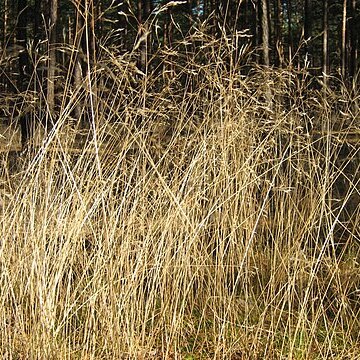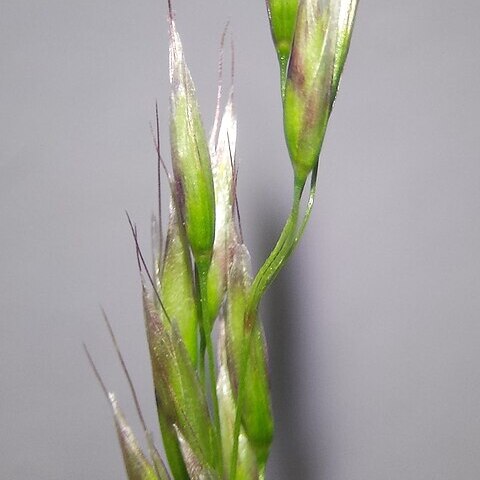Perennial, tufted, sometimes rhizomatous; old basal sheaths tightly overlapping. Culms slender, erect, 15–60 cm tall, 2-or 3-noded. Leaf sheaths longer than internodes, smooth or scaberulous upward; leaf blades setaceous, rather stiff, 3–15 cm, 0.3–0.5 mm wide, abaxial (outer) surface smooth; ligule lanceolate, 2–4 mm. Panicle open, ovate in outline, 5–10 cm, silvery with purple or brown tinge; branches usually paired, capillary, flexuous, bearing spikelets on distal part. Spikelets 4–6(–8) mm, florets 2, rachilla internode short; glumes thinly membranous, 1-veined, lower shorter than upper, apex acute; callus hairs ca. 1 mm; lemmas 3.5–5(–6) mm, asperulous, awned from near base, apex denticulate or erose; awn 5–8 mm, exserted from spikelet, geniculate in middle, column dark brown, twisted. Anthers 1.5–2.5 mm. Fl. and fr. Jul–Sep. 2n = 28.
Densely tufted perennial 3–10 dm; lvs mostly at or near the base; ligules 1–2.5 mm; blades usually involute, 1–2 mm wide; infl loose and open, somewhat nodding, to 15 cm, the lowest branches in fascicles of 2–5; spikelets purplish or silvery, 4.3–6 mm, the first glume 3–4.5 mm, the second acuminate, 3.6–5.3 mm; rachilla prolonged less than one-fourth the length of the upper floret; lemmas scabrous, truncate and minutely toothed; awn arising near the base, geniculate below the middle, the distal half somewhat divergent, surpassing the lemma by 1–3 mm; palea not bifid; rachilla prolonged less than one-fourth the length of the upper floret; anthers linear, 2–3 mm; 2n=26, 28, 56. Dry woods, fields, and sandhills; circumboreal, s. to Ga., O., Wis., and Minn.; Ark. and Okla.; Mex.
Loosely to densely tufted perennial 50-500 mm high; leaves mostly basal. Leaf blade 200-1200 x 0.5-1.5 mm, filiform, convolute, glabrous, dark green; ligule deeply lobed, 1-2 mm long. Spikelet 5-6 mm long; lemma apex minutely lacerated; awn geniculate, longer than spikelet, it is not always clear whether the awn originates basally or from the lower 1/3 of lemma; anther 1.5-2.0 mm long.


